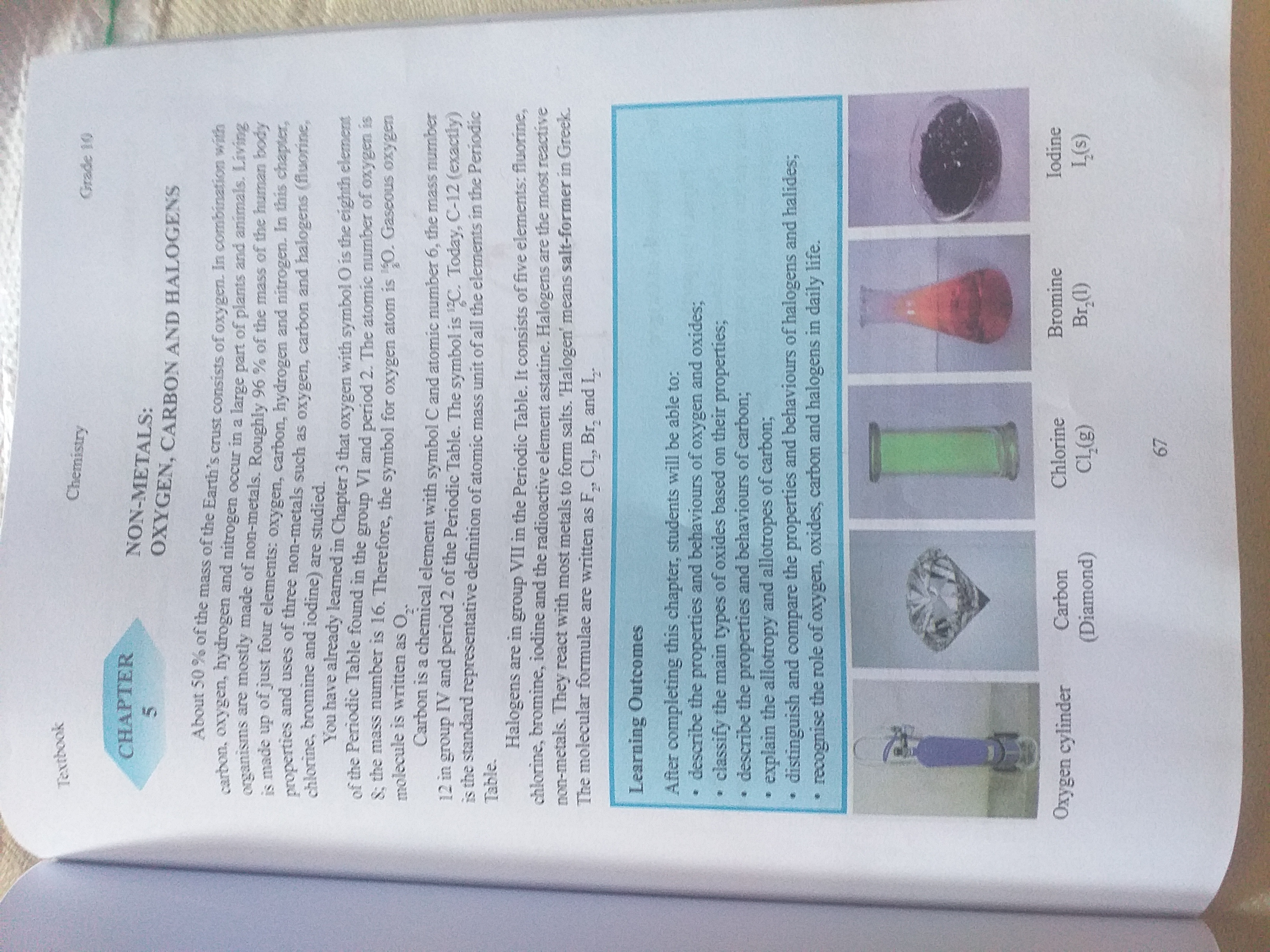What are the properties and behaviors of oxygen, carbon, and halogens?

Understand the Problem
The question discusses non-metals, particularly oxygen, carbon, and halogens, along with their properties, behaviors, and classifications. It aims to explain various concepts related to these elements and their roles in daily life.
Answer
Oxygen is reactive; carbon is versatile; halogens are reactive non-metals.
The final answer is: Oxygen is a reactive gas; carbon is versatile in bonding; halogens are highly reactive non-metals.
Answer for screen readers
The final answer is: Oxygen is a reactive gas; carbon is versatile in bonding; halogens are highly reactive non-metals.
More Information
Oxygen, as a diatomic molecule, plays a vital role in respiration and combustion. Carbon is fundamental in forming organic compounds due to its tetravalency. Halogens like fluorine and chlorine are used in disinfection because of their reactivity.
Tips
A common mistake is overlooking the unique bonding properties of carbon that allow it to form chains and rings.
Sources
- Oxygen | Discovery, Symbol, Properties, Uses, & Facts - Britannica - britannica.com
- Carbon and hydrocarbons (article) | Khan Academy - khanacademy.org
- Halogen | Elements, Examples, Properties, Uses, & Facts | Britannica - britannica.com
AI-generated content may contain errors. Please verify critical information